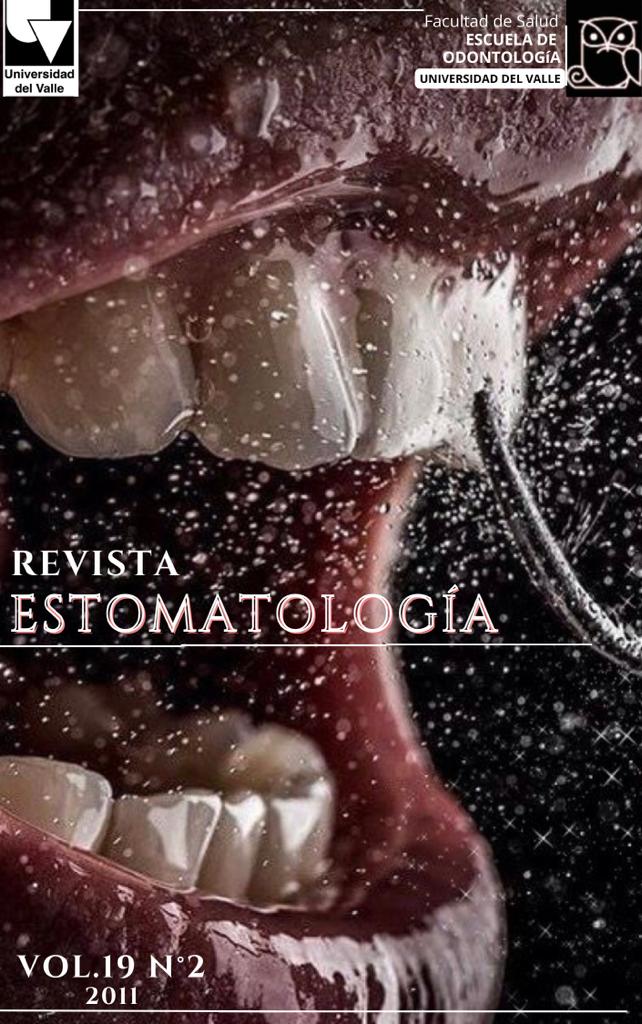Infection with Drechslera hawaiiensis. Case report and literature review
Keywords:
Oral facial infection, mycotic infection, Drechslera hawaiiensisMain Article Content
This article reports an orofacial infection caused by Drechslera hawaiiensis that normally is mortal to the patient. The case was surgically treated in Cali - Colombia in 1984 by teeth removal, and osteototomy of affected bone in the hard palate and the base of the vomer bone. Twenty years later the patient resulted infected by Dreschslera curvularia but survived both infections. A literature review (Pubmed - 2011) showed that only another case report by Drechslera hawaiiensis the patient survived. This other case was reported in the Anderson Hospital Institute in 1984. It is unknown if there is a chronic infection stage and the transmission mode of this pathogen. In patients with chronic symptoms affecting the paranasal sinuses and nasal cavity it is possible to suspect this rare disease.
Key words: Oral facial infection, mycotic infection, Drechslera hawaiiensis.
2. Richardson MD, Warnock DW. Fungal Infection: Diagnosis and Management. Blackwell Science, 1997.
3. Torres C, Ro JY, el-Naggar AK, Sim SJ, Weber RS, Ayala AG. Allergic fungal sinusitis: a clinicopathologic study of 16 cases. Hum Pathol. 1996; 27(8):793-9.
4. Pavan PR, Margo CE. Endogenous endophthalmitis caused by Bipolaris hawaiiensis in a patient with acquired immunodeficiency syndrome. Am J Ophthalmol. 1993; 116(5):644-5.
5. Waxman JE, Spector JG, Sale SR, Katzenstein AL. Allergic Aspergillus sinusitis: concepts in diagnosis and
treatment of a new clinical entity. Laryngoscope. 1987; 97(3 Pt 1):261-6.
6. Baker RD. The pathologic anatomy of mycosis. New York: Springer-Verlag, 1971.
7. Yohai RA, Bullock JD, Aziz AA, Markert RJ. Survival factors in rhino-orbitalcerebral mucormycosis. Surv Ophthalmol. 1994; 1:3-22.
8. Restrepo A, Zuluaga A. Fundamentos de Medicina. Manual de terapéutica. CIB. Ed.Carvajal S.A.; 1989.
9. Edwards, J. E. (1983) Zygomycosis. In: Hoeprich, P. D. (ed): Infectious diseases: A modern treatise of infectious processes. 3rd edn. Harper Row: Phdadelphia.
10. Rolston KV, Hopfer RL, Larson DL. Infections caused by Drechslera species: case report and review of the literature. Rev Infect Dis 1985; 7(4):525-9.
11. Yanagisawa E, Friedman S, Kundargi RS, Smith HW. Rhinocerebral phycomycosis. Laryngoscope. 1977; 87(8):1319-35.
12. Douer D, Goldschmied-Reouven A, Segev S, Ben-Bassat I. Human Exserohilum and Bipolaris infections: report of Exserohilum nasal infection in a neutropenic patient with acute leukemia and review of the literature. J Med Vet Mycol 1987; 25(4):235-41.
13. Fryen A, Mayser P, Glanz H, Füssle R, Breithaupt H, de Hoog GS. Allergic fungal sinusitis caused by Bipolaris (Drechslera) hawaiiensis. Eur Arch Otorhinolaryngol 1999; 256(7):330-4.
Downloads
Los autores/as conservan los derechos de autor y ceden a la revista el derecho de la primera publicación, con el trabajo registrado con la licencia de atribución de Creative Commons, que permite a terceros utilizar lo publicado siempre que mencionen la autoría del trabajo y a la primera publicación en esta revista.

